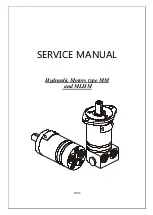
To avoid difficulties with poor ignition quality fuels the following
should be noted:
•
sufficient preheating of the engine at start,
•
proper function of inverse cooling system,
•
proper function of injection system, in particular injection
nozzle condition.
Symptoms of low ignition quality are:
“Diesel Knock”, i.e. hard, high pitch combustion noise
Effects of diesel knock are:
Increased mechanical load on components surrounding the com-
bustion space, increased thermal load, increased lub. oil consump-
tion and increased lub. oil contamination.
Caution!
Although low ignition quality produces long ignition delay,
advancing the ignition timing makes things only worse; fuel is
injected at a lower compression temperature and this will
produce even longer ignition delay.
k)
Abrasive particles.
Fuel may contain highly abrasive particles
composed of aluminium and silicon oxides known as “catalytic
fines” from certain refining processes. If not removed by effi-
cient fuel treatment, considerable wear on vital engine compo-
nents, like injection equipment, may be experienced.
02.1.5 Measures to avoid difficulties when running
on heavy fuel
Poor fuel quality will, however, influence wear, engine part life
time and maintenance intervals adversely.
In order to obtain maximum operating economy it is recom-
mendable:
a)
to limit maximum continuous output
as much as operating
conditions allow if fuel is known or suspected to have high
vanadium content (above 200 ppm) and especially if the sodium
content simultaneously is about 25 - 40 % of the vanadium
content.
b)
to limit low load operation
as much as operating conditions
allow if fuel is known or suspected to have high sulphur content
(above 3 %), carbon content (Conradson carbon above 12 %)
and/or asphaltene content (above 8 %).
Operation below 20 % of rated output should be limited to max.
100 hours continuously, by loading the engine above 70 % of rated
load for one hour before continuing the low load operation or
shutting down the engine.
Idling (i.e. main engine declutched, generator set disconnected)
should be limited as much a possible. Warming-up of the engine
02
Fuel, Lubricating Oil, Cooling Water
22-9601
02 - 8
VASA 22
Summary of Contents for Vasa R22
Page 14: ...Appendix B Welding Precautions 200147 00 4...
Page 42: ...02 Fuel Lubricating Oil Cooling Water 22 9601 02 22 VASA 22...
Page 60: ...03 Start Stop and Operation 22 9632 03 12 VASA 22...
Page 72: ...04 Maintenance Schedule 22 9845 III 04 12 MD HF...
Page 92: ...06 II Adjustments Clearances and Wear limits 22 9601 06 6 VASA 22...
Page 116: ...08 Operating Troubles Emergency Operation 22 9601 08 8 VASA 22...
Page 144: ...11 Crank Mechanism 22 9601 11 18 VASA 22...
Page 156: ...12 Cylinder Head with Valves 22 9601 12 12 VASA 22...
Page 164: ...13 Camshaft Driving Gear 22 9601 13 8 VASA 22...
Page 172: ...14 Valve Mechanism and Camshaft 22 9601 14 8 VASA 22...
Page 183: ...22 200520 Turbocharging and Air Cooling 15 VTR Turbocharger 15 11...
Page 189: ...15 III Turbocharging and Air Cooling 22 8604 15 6 VTR 161 251 Turbochargers...
Page 209: ...17 Fuel system 22 9601 17 8 VASA 22...
Page 229: ...18 Lubricating Oil System 22 9601 18 20 VASA 22...
Page 247: ...19 Cooling Water System 22 9601 19 18 VASA 22...
Page 261: ...21 Starting Air System 22 9601 21 10 VASA 22...
















































